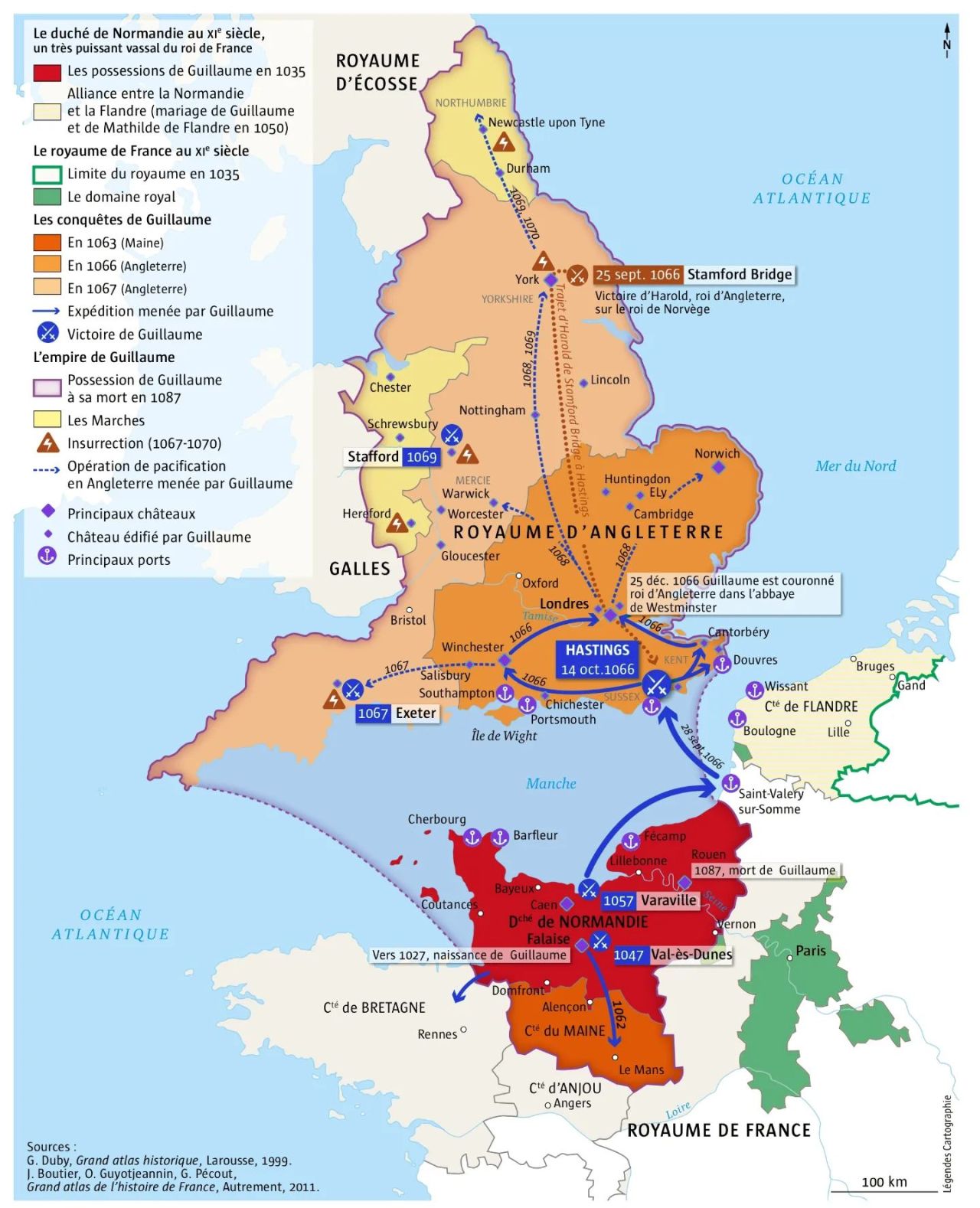
William the Conqueror, Duke of Normandy & King of England (1066-1087)
Map published in “L’Histoire” n°424 (June 2016); included in the “World Historical Atlas” by Christian Grataloup, Les Arènes/L’Histoire, 2019
In 1066, the victory at Hastings linked England to the continent for several centuries, despite the difficult conquest of the North and Cornwall. In about ten years, William extended Norman power from the Scottish marches to Maine. He stitched the territory with castles, took control of the administration and avoided the creation of vast vassal fiefdoms, apart from the counties facing Wales and Scotland. The duke-king, upon his death in 1087, was in a position to compete with the king of France.
1035: On the death of his father, William becomes Duke of Normandy at the age of 8.
1047: Battle of Val-ès-Dunes. William, allied with the French king Henry I, defeats a coalition of rebel Norman barons.
1051: Edward the Confessor, King of England, asks William to succeed him.
1052: Breakdown of the alliance between William and Henry I.
Around 1053: Marriage of William and Mathilde of Flanders.
1063: Harold is taken prisoner by Gui de Ponthieu. William had him released and demanded that he undertake to recognize him as king of England upon Edward’s death.
1066, October 14: Battle of Hastings.
1066, December 25: William crowned king of England.
1069-1070: Rebellion in northern England and its suppression.
1083: Death of Queen Mathilde. She is buried in the Abbaye aux Dames de Caen, which she founded.
1085-1086: Census for the completion of the Domesday Book.
1087: Death of William. He is buried in the Men’s Abbey of Caen, which he founded. His eldest son, Robert Courteheuse, succeeded him as Duke of Normandy; his third son William II Roux becomes king of England.
1204: Philippe Auguste, king of France, defeats John Lackland and conquers Normandy. It is the end of the cross-Channel empire created by William.
